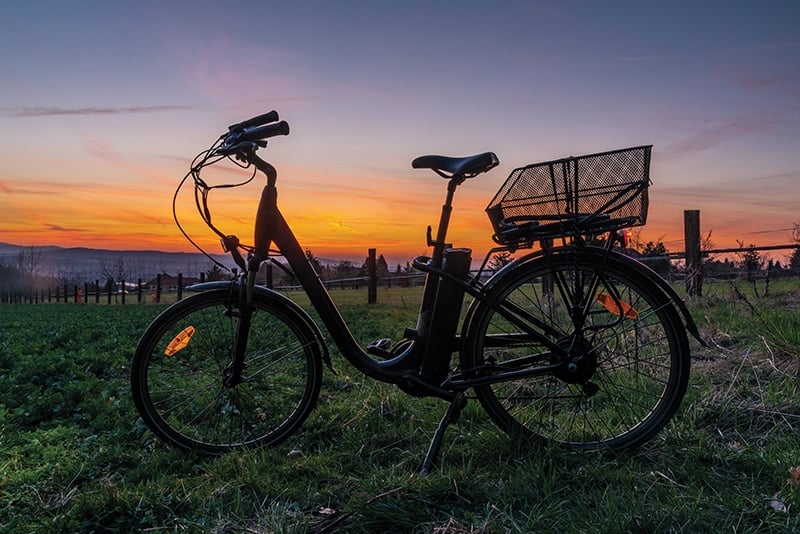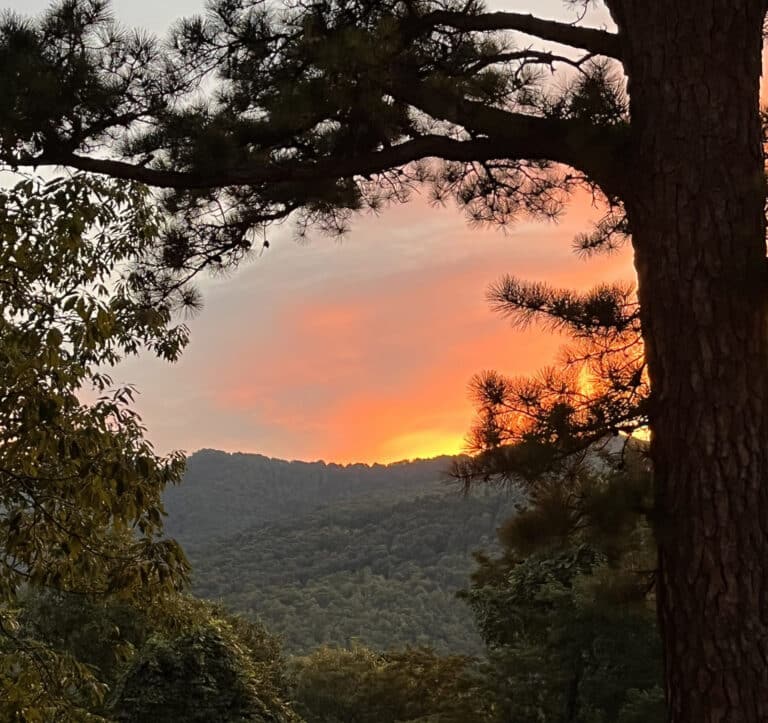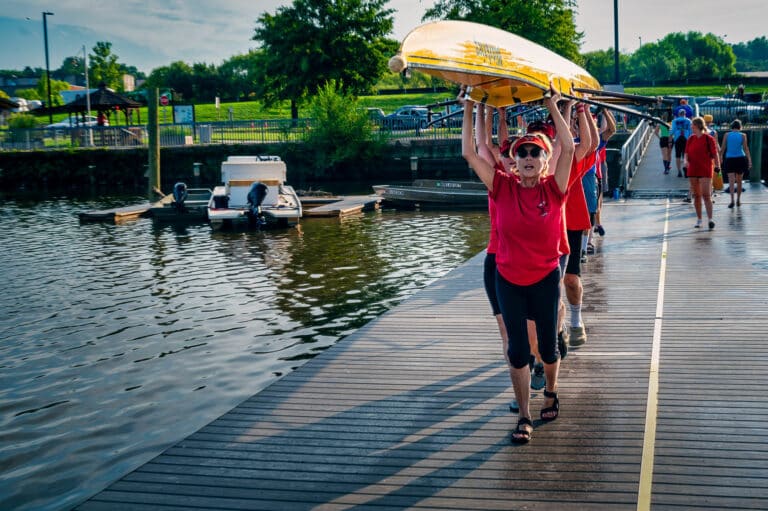When it comes to both mountain biking and road riding, cyclists in the Blue Ridge have differing opinions on e-bikes. / photo courtesy Getty Images
Debate Continues in Cycling Community
The thought of electric assist bikes has people both screaming “NO!” and whimpering “yes.”
Some mountain bikers are against E-bikes on trails, concerned about the deterioration of trail systems with fears the beloved woods will evolve into motocross tracks. They also fear the mountain biking vibe would drastically change, assuming that beginners are riding E-bikes and unfamiliar with proper etiquette and respect for the trails. They also contend that even just increased speed and traffic on trails will greatly degrade their experience.
On the flip side, E-bike riders are grateful for the pedal-assist because they are able to return to the sport despite physical limitations and ailments—probably from old mountain biking injuries, so not all are beginners. Another set of E-bike riders say they enjoy the thrill of a new sport, a new mode of transportation, and that it increases their fun potential, insisting it doesn’t have any negative impacts on the sport or the woods.
“People who rip are gonna rip; those who take their time and ride slower are going to do so,” says E-biker Linc Stallings. “Teaching responsibility, awareness, trail etiquette, and adjusting trail regulations to reflect those things will go further than excluding someone because of what they ride.”
But the possibility of teaching trail etiquette is easier said than done. “I have seen folks shredding loops with speakers blaring and zero idea of trail etiquette,” says mountain biker Ben Wiggins. “I literally had to pull out in front of a guy who ran me off the trail while I was climbing and he was descending. I blocked the trail and explained that uphill has the right of way.”
Introducing new modes of transportation to the trails will always be a debated issue, as proven by the ongoing dynamic between hikers, horseback riders, and mountain bikers. Mark Dulken, Pisgah Cowboy Trail Crew leader, has put a lot of sweat into local trails and would like to see E-bike users enjoy their time in the woods, but with a permit, or limited to paved roads, gravel, and gated logging roads.
“I personally witnessed public land dirt bike OHV trails get ruined with the introduction of Razors,” Dulken said. “I predict the same will happen with the introduction of E-bikes. It opens the sport to the unskilled masses that don’t appreciate the work it takes to get to the same places. All my favorite riding areas are now spoiled by drunks on 4-wheelers.”
The type of vehicle allowed on trails is what concerns some riders. “Real motorcycles should be allowed anywhere electric bikes are allowed. Plus gas motorcycles can last for decades with basic maintenance. E-bikes are garbage in a couple years because batteries and electric motors are disposable,” says Randy Collette, a Brevard-based bike mechanic.
These arguments also exist on the road, proving that change, while inevitable, is often resisted and always requires new education. Road cyclists complain that E-bike riders are blowing past them on the climbs or wadding up the pace line without proper group riding etiquette. The commonality among frustrations lies in education. Many people who find road riding dangerous often lack assertive driving skills as well as assertive cycling skills.
I took an E-bike tour around Asheville with The Flying Bike and had a fantastic time. We began the tour with a lesson in the parking lot to familiarize ourselves with the bike. It was my first experience on a pedal-assist bike and it felt like a cross between a bicycle and a moped.
Being an assertive cyclist, driver, and motorcyclist, I felt that my enjoyment factor, as well as safety factor, were well above that of the timid riders in my tourist group. At times I chose to pedal so that I could stay warm in the frigid 34 degree overcast day, but I also enjoyed the throttle in congested traffic areas when I wanted to zip out of the way. What I found missing was the cadence of a good spin, the beautiful angst of a steep climb, the worthiness of a post-climb descent, and the glory of dropping your riding buddies due to sheer strength and superior cardiovascular fitness.
The other riders in our group admitted they lacked coordination and bike-handling skills. Shifting gears and strategic throttle use was not intuitive, so they were often distracted from surrounding traffic patterns to figure out the bike and catch up with the group. Even when the tour guide brought us to a straightaway and encouraged us to max it out at 28 mph, some were too scared to go that fast.
“I 100 percent prefer them to people driving their cars,” says cycling advocate Joe Allowas.
Timid riders are scared, and scared riders become victim to aggressive drivers. The type of bike has little to do with it. Education of bike traffic laws, cycling etiquette, combined with more hours in the saddle, are the only way around this debate, whether on the road or on the trail.
Urban E-bike rider Kristy Carter urges people not to knock something they haven’t tried. She commutes on hers, rather than a standard bike, because it extends the distance she can travel and increases the number of trips she can take in a day. “The e-bike makes leaving the car at home an easy choice,” she says, “As much as I hate giving in to the pressure of looking decent, a challenging route on a standard bike leaves me looking like a sweaty, middle-aged lady who just got creamed in Jazzercize class.”








